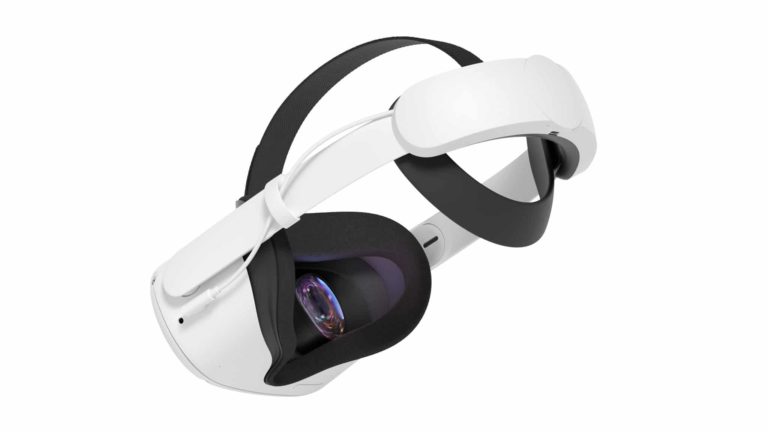
As you may have heard, Meta announced its Q4 and full-year 2021 earnings last week. And the results weren’t great. Most impactful on Meta’s stock price and subsequent tech-press handwringing was negative user growth for the first time for its flagship property, Facebook.
There’s also been ample focus on the investment (and losses) in Meta Reality Labs’ (MRL), which houses AR & VR efforts and all-things metaverse. We’ll come back to those losses, but our minds first go to another aspect of Meta’s earnings: direct signals for VR unit sales.
For the first time, Meta broke out MRL revenue. There we learned that the division brought in $877 million in Q4 and $2.27 billion in the full year. This signals healthy top-line growth given $1.1 billion in 2020 revenue and $501 million in 2019 revenue. This tracks to our estimates.
But our big question is how this translates to Quest 2 unit sales, and where this put its installed base? Equally meaningful, how close is it to the 10-million installed-base target that ignites a network effect according to Mark Zuckerberg? We’ve predicted it will hit that mark in 2022.
2022 Predictions: Quest 2 Hits the 10-Million Mark
Data Dive
So what do MRL’s figures tell us about Quest 2 unit sales? Like past Data Dives we’re breaking down the figures, but with a different approach this time given the new earnings format. We no longer have to rely on proxies such as reverse engineering Meta’s “other” revenue category.
Diving right in, Reality Labs brought in $2.27 billion in 2021 as noted. As a gift to the analyst corps, Meta also disclosed that lifetime content sales were $1 billion. We can amortize that total, applying MRLs overall growth over time (noted above) as a guide for software revenue pacing,
With that, 2021 software revenue comes to about $525 million*, making hardware $1.74 billion. As we’ve estimated, headset sales are about 92 percent of that, the rest being first-party accessories like head straps and face shields (many of which it gave away in a Q3 product recall).
Considering an average unit price of $329** this means that Meta sold approximately 4.87 million Quest 2s in 2021. This is fairly close to the 4.99 million units projected by our research arm ARtillery Intelligence in November. But what does that mean for Meta’s installed base?
Did Quest 2 Sell 1.4 Million Units in Q3?
Road to 10 Million
To calculate the installed base, we can utilize the above ’19 and ’20 figures for MRL (installed base goes back 3 years given average replacement cycles). Applying the same software formula above, we get roughly $116 million in software revenue for 2019 and $255 million for 2020.
That gives us $385 million in hardware revenue in 2019 and $845 million in 2020, including accessories. Average hardware price in 2019 was $529 (Rift, Rift S and Quest 1), and $429 in 2020 (Rift S and Quest 1). That yields 670,000 headsets sold in 2019 and 1.81 million in 2020.
This brings the installed base (again, going back 3 years) of Meta VR hardware as of the end of 2021 to 7.36 million units. That makes it close to the 7.32 million units that we’ve projected, and puts meta on pace to hit it’s 10-million installed base target sometime in the first half of 2022.
*This figure represents the Oculus Store’s gross revenue, before developer payouts, which are usually 70 percent after taxes.
**Quest 2 base model (64GB) is $299 while the 256GB model is $399. This averages out at $349, but we’ve reduced the estimated hardware ARPU to $329 due to weighted sales for the base model (common for new hardware). Third-party reseller markups aren’t included.
VR Global Revenue Forecast, 2020-2025
The Right Time
Back to Meta’s earnings and Wall Street reaction, this was more about flattening user growth than MRL’s $10.2 billion in losses… though the latter didn’t help. MRL has been painted in interweb punditry as an ill-timed passion project, given user declines and privacy-era headwinds.
But it could actually be the opposite. Considering maturing global growth due to Facebook’s size, and the challenges from Apple’s app tracking transparency (ATT), now is precisely the right time to start building lifeboats. The metaverse and MRL are more of a cruise ship.
Moreover, Meta’s investments in hardware like Quest 2 and rumored operating system make it a bonafide platform. And there, it’s less beholden to the uncertainties of piggybacking on others’ platforms – namely iOS and Android. Meta has learned this lesson the hard way.
Meanwhile, amidst all the handwringing in the tech press, the silver lining for Meta is that MRL’s top-line is growing at a healthy pace. Its losses are still considerable, but the more important part in a long-game sense (Meta’s jam) is that cruise ship construction is underway.

